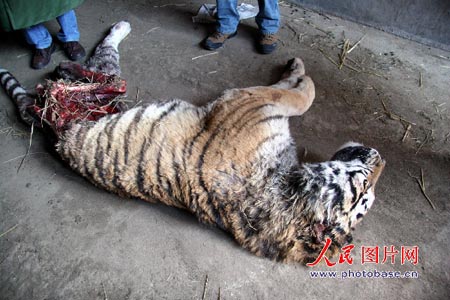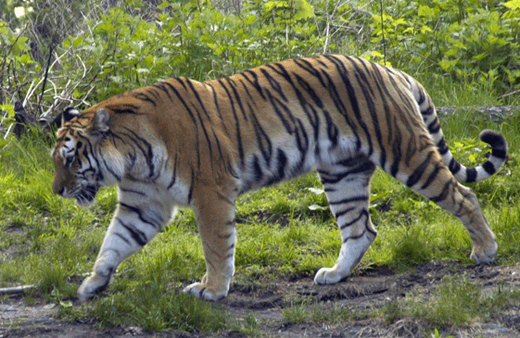Post by bob on Oct 5, 2009 3:56:51 GMT -5



Incidentally, the zoo world underwent a concerted effort a few years ago to get the Siberian tiger P. tigris altaica re-branded with one of its alternative names, Amur tiger. This hasn't been too successful, and 'Siberian tiger' is still used more widely (at least, it is in the English-speaking world). Wild Siberian tiger exhibit low genetic variability and seem to be bottlenecked (Russello et al. 2005). This was thought to be the result of human persecution (during the 1940s, the wild population was down to 30-40 individuals. It's now somewhere round about 200 animals according to WWF, though pre-2000 estimates were as high as c. 500). The global captive population (of about 250 individuals) is, rather unusually, more diverse genetically, so it might be that the founders of the captive population were captured before bottlenecking occurred.
However, recent work indicates that the Siberian tiger is a very young subspecies anyway (less than 10,000 years old) and that it only recently evolved from wandering populations of the almost certainly extinct Caspian tiger P. t. virgata (Driscoll et al. 2009) [captive Caspian tiger show below. This individual photographed at Berlin Zoo in 1899]. If this is valid, then the Siberian tiger may not have had much genetic variation to begin with. More importantly, perhaps, is that Caspian and Siberian tigers previously had a continuous range, were very similar in terms of habitat and natural history, and were extremely similar genetically: given this data, it might be argued that they should be regarded as synonymous. If this becomes accepted (see Driscoll et al. 2009), then (1) P. t. virgata is the correct name for the Caspian + Siberian tiger population (because P. t. virgata Illiger, 1815 predates P. tigris altaica Temminck, 1884) and (2) P. t. virgata is not extinct after all, just locally extinct across much of its former range (you may know that alleged sightings of P. t. virgata continue across its former range, despite its supposed extinction during the 1950s 1970s).
Panthera_tigris_virgata_Berlin_Zoo_1899.jpg
Incidentally, this work is another demonstration of the fact that phylogenetic work can have a major impact on conservation strategies and wildlife management (because, if Caspian and Siberian tigers are the same thing, 'Siberian' tigers can be re-introduced to parts of the Caspian tiger's former range).
PS - Driscoll et al. (2009) did not support the view of Mazák & Groves (2006) that the Sumatran tiger P. sumatrae and Javan tiger P. sondaica should be regarded as distinct species relative to P. tigris.
Ref - -
Driscoll, C. A., Yamaguchi, N., Bar-Gal, G. K., Roca, A. L., Luo, S., Macdonald, D. W., O'Brien, S. J. (2009). Mitochondrial phylogeography illuminates the origin of the extinct Caspian tiger and its relationship to the Amur tiger. PLoS ONE, 4 (1), e4125. doi: 10.1371/journal.pone.0004125
Mazák, J. H. & Groves, C. P. 2006. A taxonomic revision of the tigers (Panthera tigris) of southeast Asia. Mammalian Biology 71, 268-287.
Russello, M. A., Gladyshev, E., Miquelle, D. & Cacconne, A. 2005. Potential genetic consequences of a recent bottleneck in the Siberian tiger of the Russian Far East. Conservation Genetics 5, 707-713.








